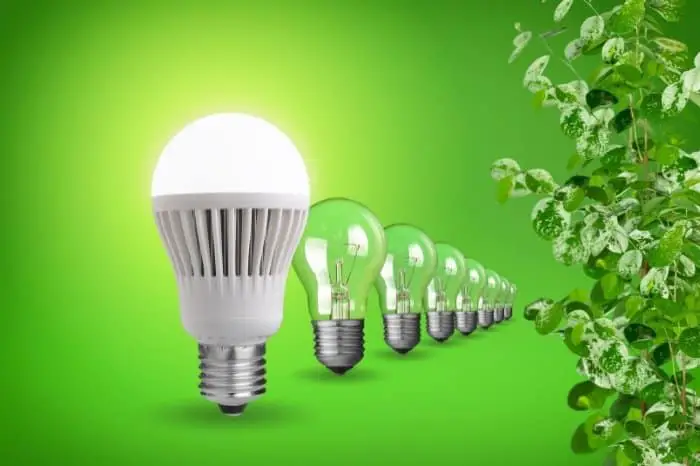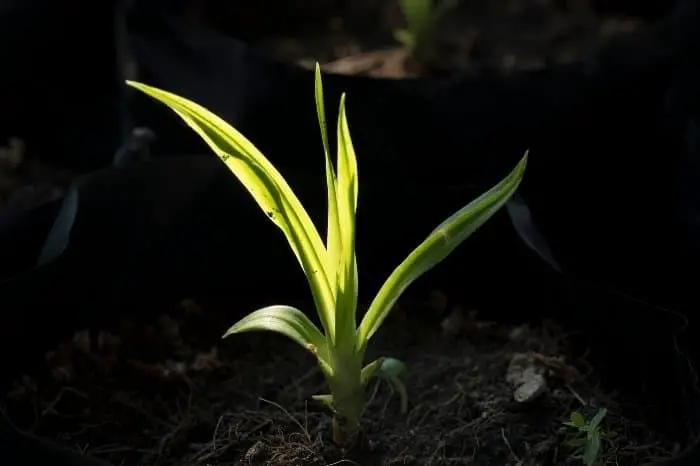Last Updated on October 29, 2022
Are you wondering if growing with household LED bulbs will be great for your indoor growing needs? Well, let’s look into this.
There is definitely a difference between regular household LED lights and LED grow lights. Regular household LED lights are the ones used in our homes while LED grows lights are designed especially for growing plants.
The standard grow lights you find around you may be expensive and regular household lights are less expensive. For this reason, you may want to know if growing with household LED bulbs is ideal. Read on to find out the answer.
Growing With Household LED Bulbs
The straight-up answer is yes, growing with household LED bulbs is fine. In a few cases, you can grow your plants using household LED bulbs. However, you should note that these household bulbs are not designed for plant growing needs compared to the standard grow light bulbs designed for growing plants.
Therefore, your plants may not grow efficiently as they should because they may not contain the appropriate full spectrum. Your plants require a complete spectrum of light containing all the colors of spectrum which are blue, red, violet, green, yellow, and orange.
Also, some of these light spectrums are required by your plants to enter into their various stages such as vegetative stage, flowering stage, or fruiting stage.

Growing with regular household LED bulbs may even cause you to always replace your bulbs because they don’t have a good lifespan compared to standard grow lights. Therefore, this might even cost you more. At the end of it all, regular household LED bulbs may end up prolonging your growing period. Also, the yield at the end of harvest may be small and of low quality.
If you want to give growing with household LED bulbs a try, you can go ahead. Just make sure you keep a close watch on your plants’ response to these lights. Your plants’ response will tell you if they are fine with the light or not.
Your plants may begin to exhibit some signs that they aren’t receiving good lights so this will help you determine their response. Some signs they will show when they are not getting optimal lights are as follows:
Signs Caused By Inadequate Light
- Leaves start to show lighter color and some parts of the leaves may begin to turn yellow,
- Plants grow tall with weak stems,
- Plants’ growth may be stunted.
Once you notice these signs, it’s an indication you need to obtain some additional light bulbs. The best type of bulb usually contains both blue and red light wavelengths. The blue light is required for the vegetative stage and the red light for the flowering and fruiting stage.

Types Of Plant Light Bulbs
There are various types of daylight bulbs for plants you can use to grow your plants. However, if you require lights for just regular houseplants, you can go for light fixtures or lamps depending on your needs.
Here are some plant light bulbs you can use for your indoor plants:
1. Incandescent Bulbs
Incandescent bulbs are the light bulbs seen in most homes and they are one of the first options most people consider. They are one of the most common light bulbs to use and it is very affordable.
Although incandescent bulbs emit much heat, which is why they should be set up at least two feet away from your plants. This will help avoid damage to plants caused by heat. Incandescent bulbs should be used for a small indoor garden. They will also consume a lot of power which can cost you extra.
2. Fluorescent Light Bulbs
Fluorescent light bulbs are another popular type of light to use for your plants. They are ideal for small-scale gardens. With this light, you get a broader light spectrum that can be used for different purposes.
Thus, you can use fluorescent lights for seed germination, vegetative stage, flowering stage, and fruiting stage. They are safer to be used on plants because they emit lesser heat and they are also budget-friendly. Fluorescent light bulbs will consume lesser power saving, thus, you get to save cost, and they last longer.
3. High-intensity Discharge
High-intensity discharge lights include high-pressure sodium (HPS), and metal halide (MH). These lights may be a bit expensive to obtain and use, however, they are still a great choice for your plant growing needs.
The metal halide light contains blue light that will enhance vegetative growth. The high-pressure sodium light contains redder which promotes flowering. So, you can be sure of getting efficient lights for your plants with high-intensity discharge lights.
However, with their efficiency, they are so powerful that they consume more power at the same time producing more heat. Also, they need an extra component called a ballast to complete them.
4. Light-emitting Diode (LED): Daylight & Soft White LED Bulbs For Plants
LED lights are the most popular grow light used among growers. They are highly efficient and will release minimal heat while consuming less power. LED lights can produce both red and blue lights required for the vegetative and flowering stages of your plants.
LED lights can be represented as daylight, bright white, and soft white. Talking about daylight, this is a very bright white-blue light that has a high value of color temperature range of 5000 to 6500K. On the other hand, soft white lights give rise to yellow tones with a lesser value of color temperature that ranges from 2700 to 3000.
LED Grow Light Bulb, Briignite BR30 Grow Light Bulbs
FAQ’s
Can I use regular LED lights to grow plants?
If you are wondering whether you can use regular LED lights to grow your plants, the answer is yes. However, these lights are different from regular ones in a way that they emit far less heat.
Regular LED lights usually have a wavelength of around 620 nm and emit high amounts of blue light. If you are interested in growing plants indoors, you should look for LED lights that emit light in the range of 400-700 nm. You should also check if your LED light has a cooling fan. A fan will keep the lights cooler. In addition, you can also use fluorescent bulbs or CFL bulbs in your garden. These bulbs emit more light than regular LED bulbs.
What color LED is best for plants?
LEDs are the best light source for plants, and any LED that fits in the space you have available will work. The most important consideration is to make sure the LED is close enough to your plant that it is receiving the correct amount of light.
The best color LEDs are the ones that most closely match the spectrum of sunlight, and this is the same for all plants.
If you want to grow any plant in full sunlight, then you should use white LED lights. What is the difference between red and yellow LEDs? The difference between red and yellow LEDs is that yellow ones have a slightly warmer color temperature than red ones. This means that they will emit slightly more blue light than red LEDs, but they also will emit more red light than red LEDs. They will not produce as much heat as red LEDs, and they will last longer.
How far away should LED grow lights be from seedlings?
The closer to the plant the better, and also the higher the light output is the better. As you said, the light should be at least 20 inches from the seedlings.
This is pretty much the standard recommendation for starting seeds, unless your seedlings are large. You don't want to be putting them under direct lighting for very long, but if you put them in the dark and keep them in there for too long they can actually die.
Growing With Household LED Bulbs: Final Say
Growing with household LED bulbs may be okay, but your plants won’t just grow healthily and efficiently as they should with a standard grow light. It’s best you go for grow lights that will provide your plants with the correct light spectrum for their growth.
In all this, ensure the light you’re using for your indoor plants contains the correct color temperatures. so, invest in quality lights so your indoor plants can flourish.

Eunice is an enthusiastic gardener with a passion for growing beautiful flowers. She loves nothing more than spending time in her garden, tending to her plants and enjoying the outdoors. Eunice has been gardening for over 15 years and has developed a unique style of landscaping that is both practical and aesthetically pleasing. She is especially fond of growing roses and enjoys experimenting with different varieties and colors. Eunice takes great pride in her garden and often shares the fruits of her labor with friends and family. In her spare time, she enjoys reading gardening magazines and attending local horticulture events. Eunice is passionate about her hobby and is always eager to share her knowledge and experience with others.

